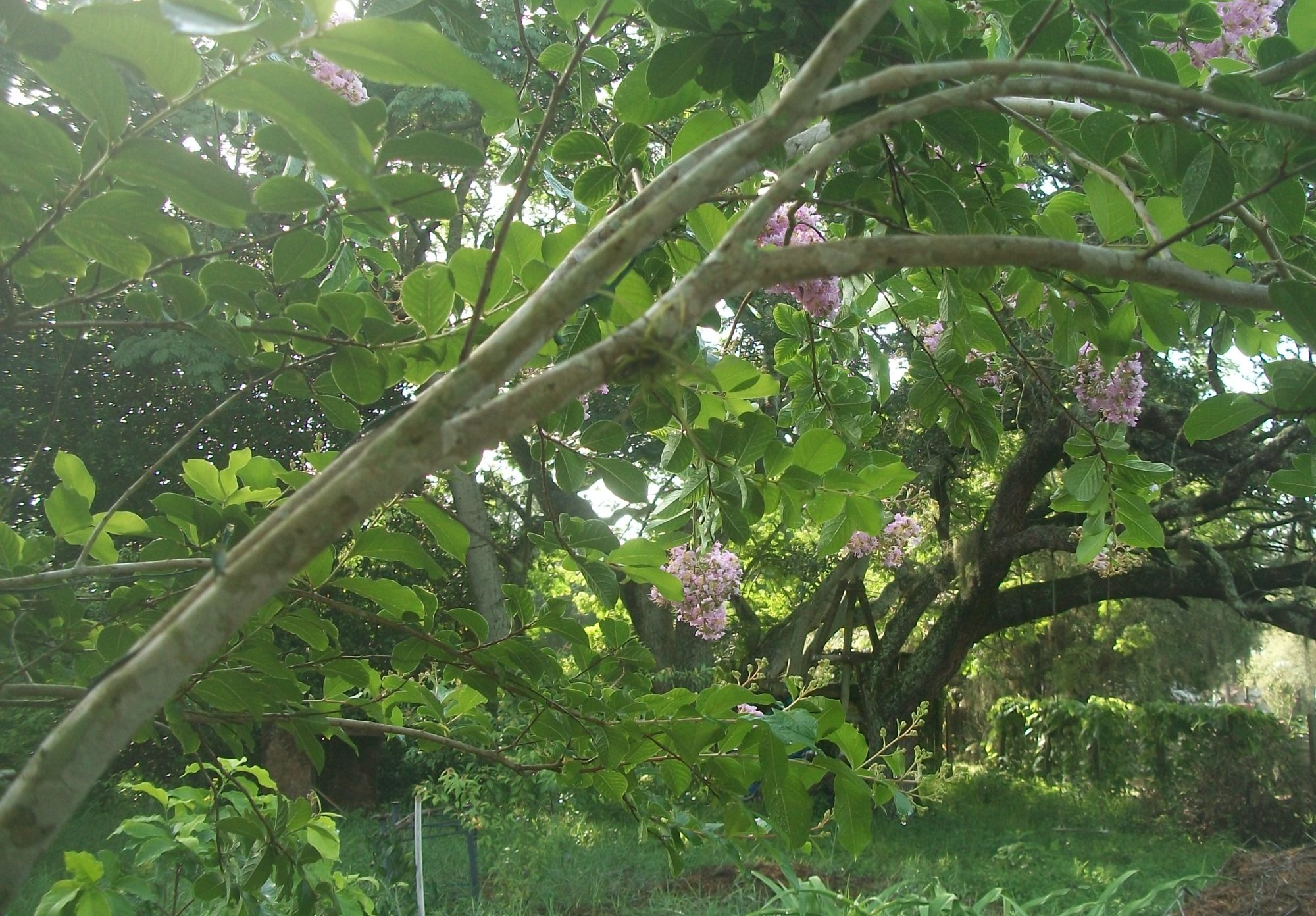
Forest gardening is about creating hospitable environments for all kinds of living things, preferably native species. Here in Florida, that includes the green anole, which over the past few decades has been getting squeezed out by the highly invasive and aggressive brown anole. Here on Rose Hill, we see far more brown anoles than the native green anoles.
This afternoon I took the dogs for a run in the lower meadow, and as I passed by one of the hog plum bushes there, I spied a green anole molting. I had just joined a social media group dedicated to Florida Birds and Wildlife, and so I was eager to take a picture and share it there. The one above, cropped from the original, is the one I shared. Below is another picture, taken after he had moved.

Our native green anoles are resilient and have adapted quickly to the brown anole invasion. The green anoles have taken to the higher branches, leaving the brown anoles to live and hunt on the ground. (Native lizard hangs tight with rapid evolution, November 1, 2014, by Kevin Spear, Orlando Sentinel).
From a forest gardening perspective, what does this mean? The brown anole feeds on many things on the ground that might harm my plants. The green anole, living a more arboreal life now, feeds on other things in the shrubs and trees that might harm my plants. Both kinds of anoles are eaten by birds of prey, snakes, and cats, and no doubt by other wildlife as well.
Native shrubs and plants are said to be hospitable environments for green anoles. That makes sense. My lower meadow is almost all native plants because I have left it mostly untouched for decades. The hog plum that the green anole was on is a native shrub.
What are the take-home lessons in this? Be observant about what is going on around you on your property. Pay attention to what is happening on the small scales and larger scales. Think about what you observe in terms of the whole that you are working to create, and plan accordingly.
In practical terms, what I observed in the meadow has informed me to continue planting native shrubs and plants up closer to the house. That is not only for their sake, but for the sake of the hospitable environments that they provide for other native wildlife, including the green anoles.
